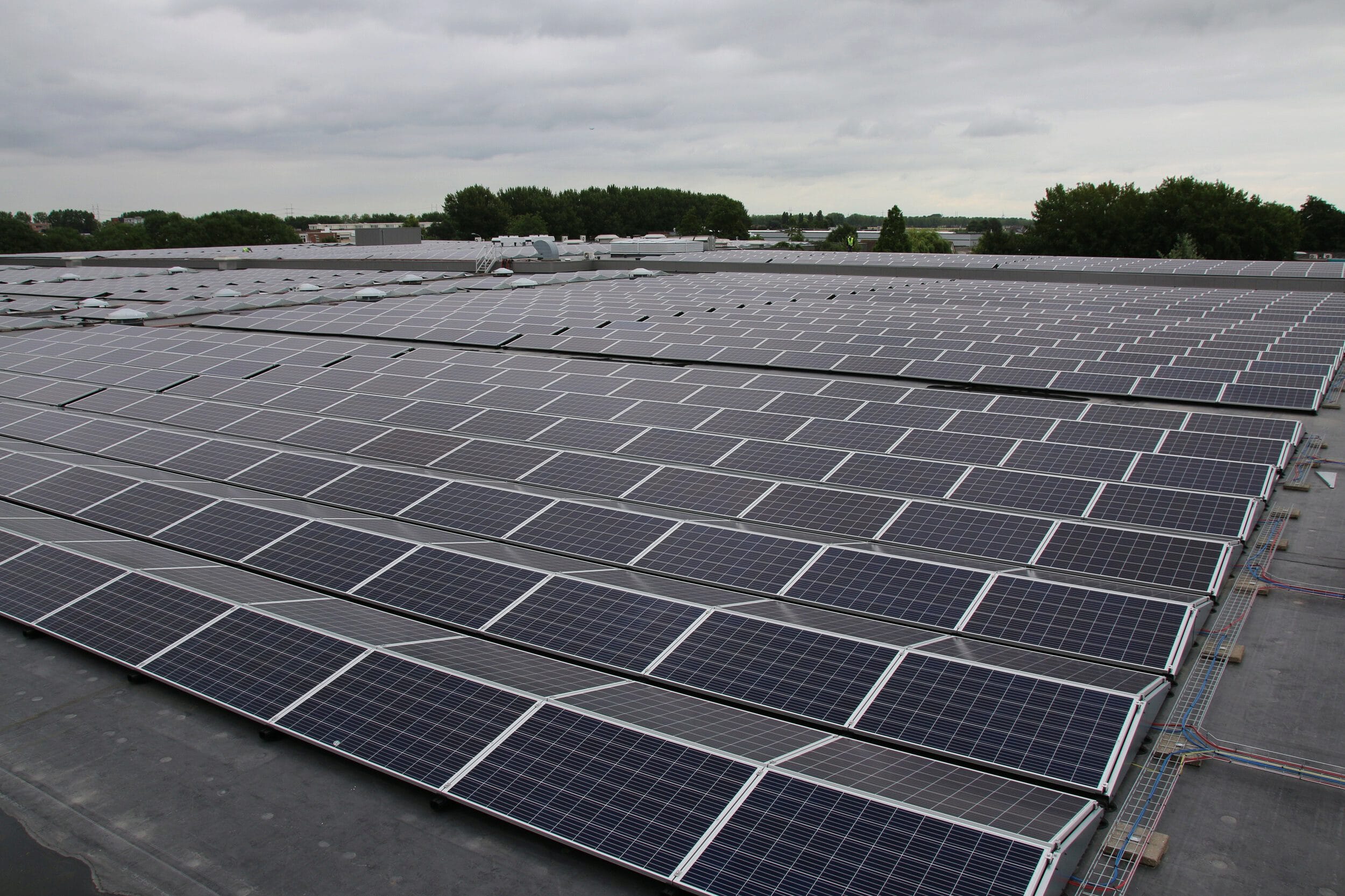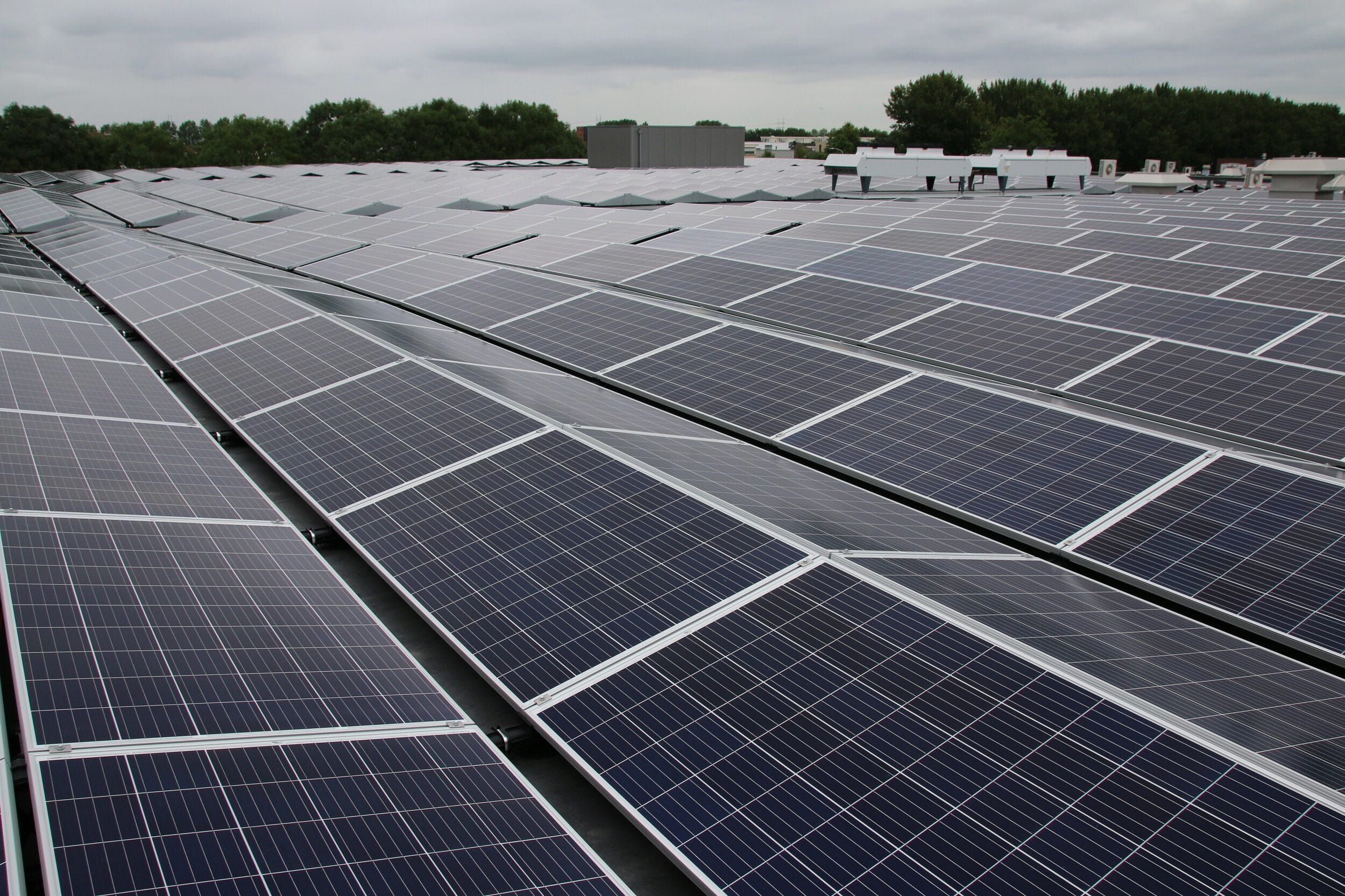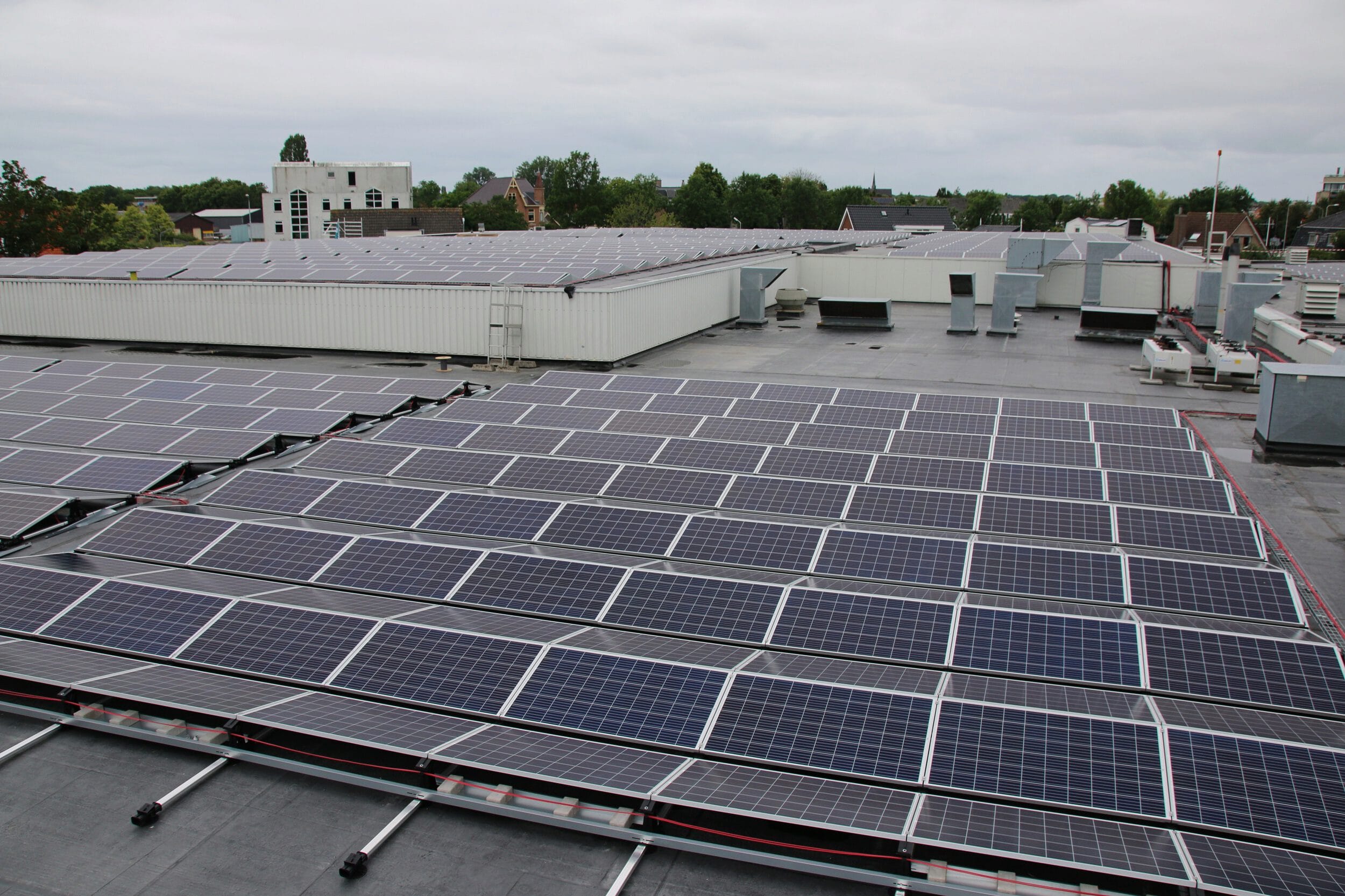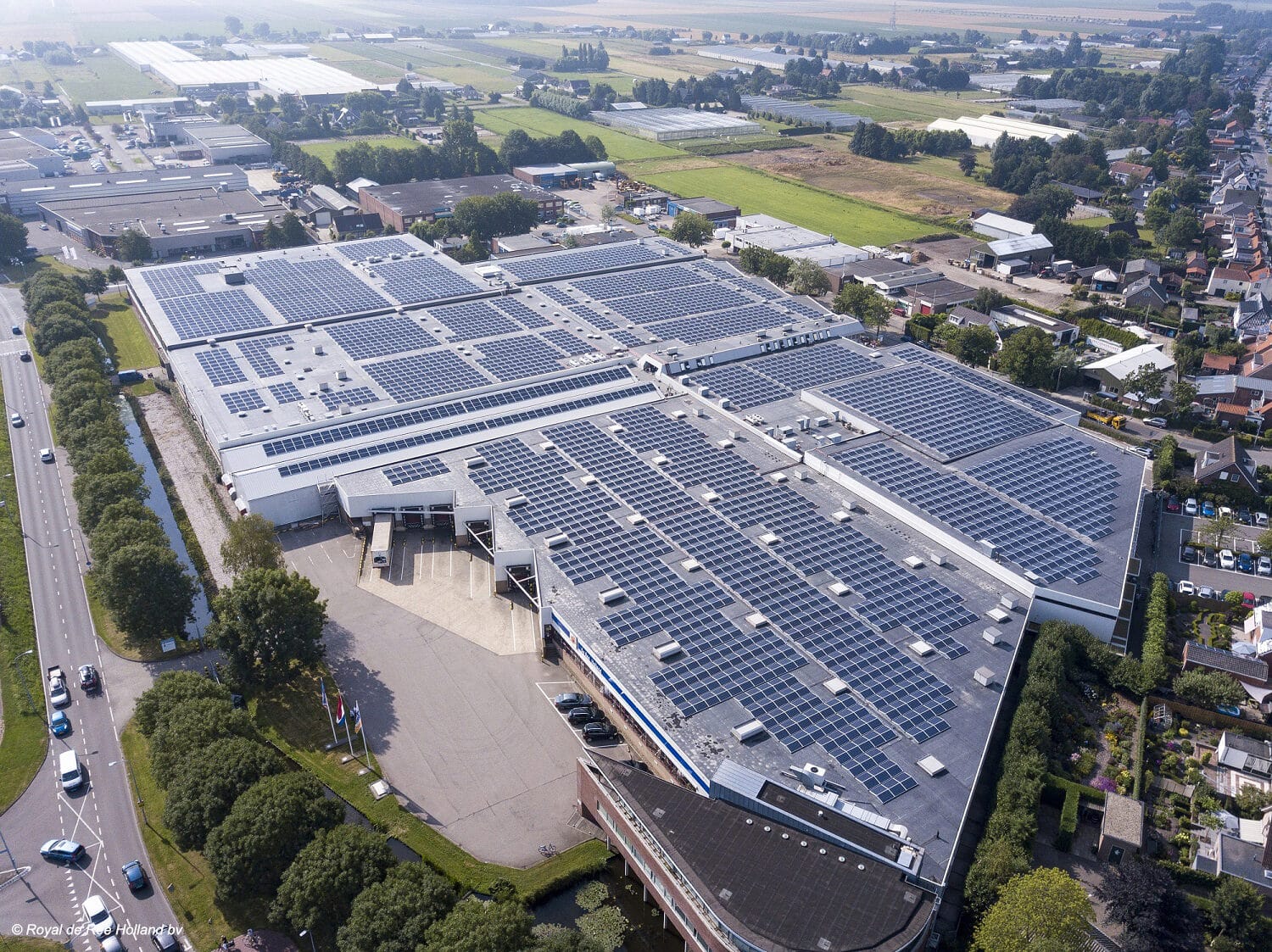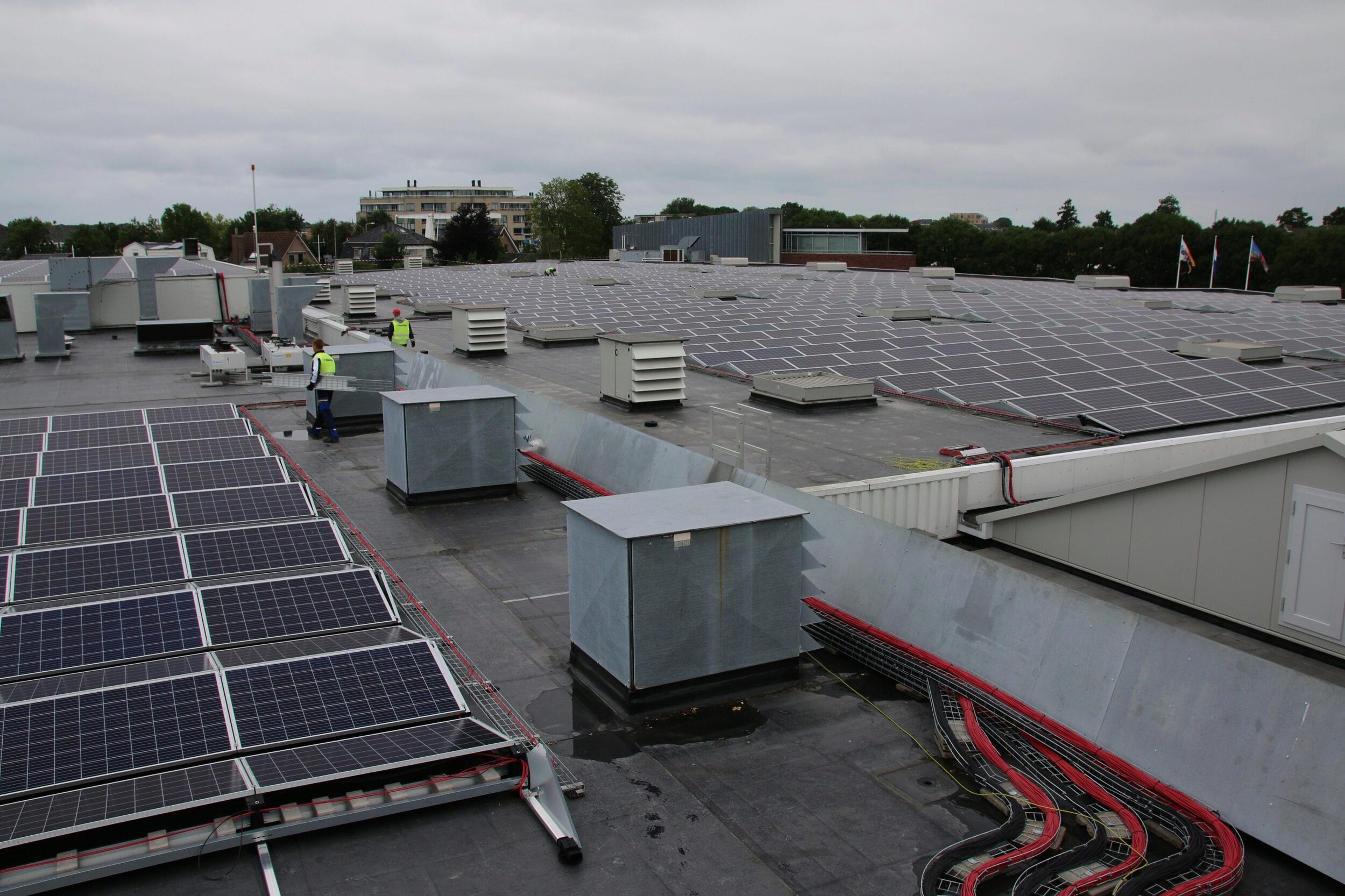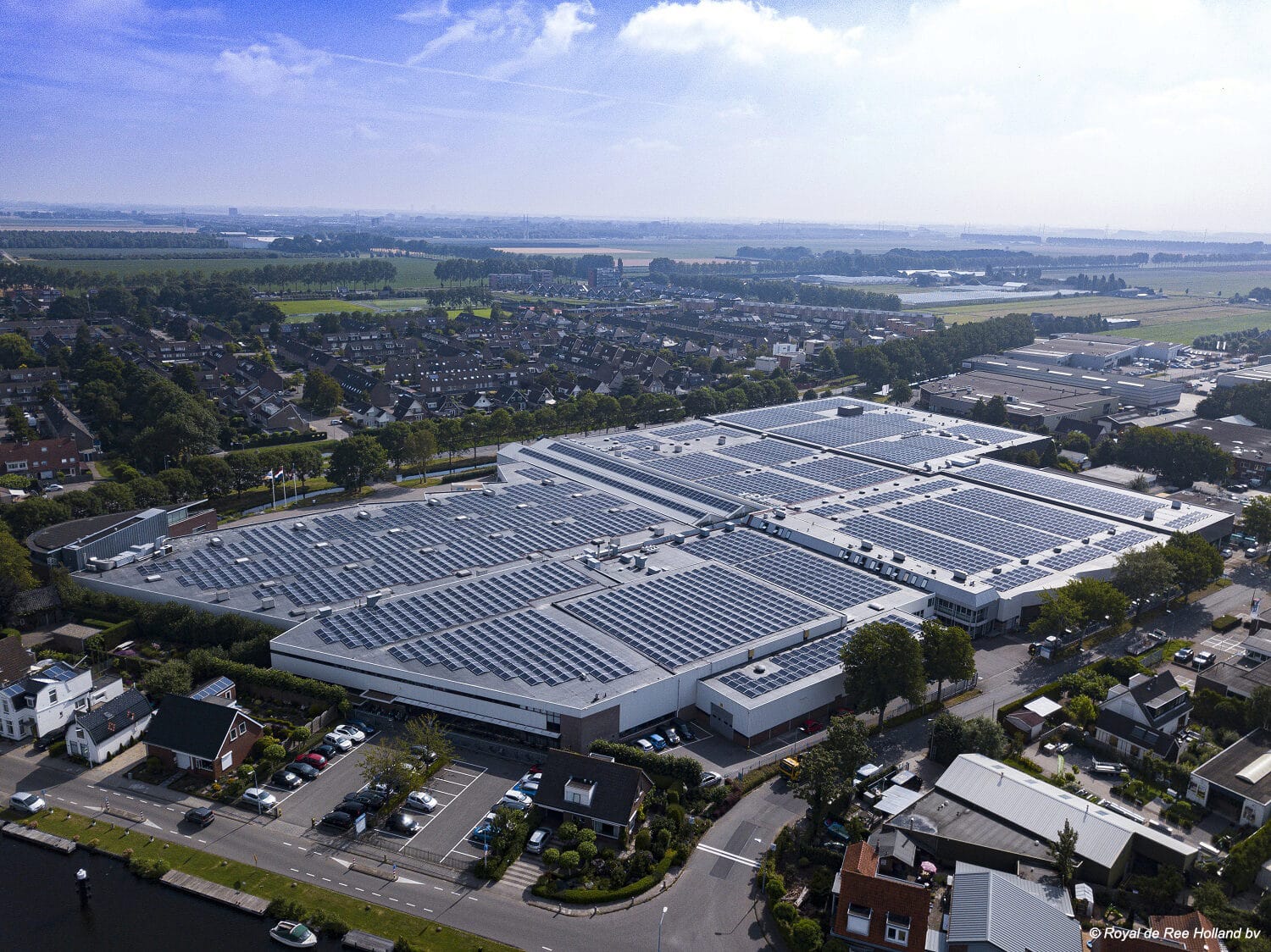SOLAR ROOF WITH 11,000 PANELS FOR A CARBON-NEUTRAL COMMERCIAL BUILDING
Centuries ago, tulip bulbs were so precious that they were more expensive than houses. And while today the ‘tulip mania’ is nothing more but a historical anecdote, the delicate nature of flower bulbs still requires special growing and storing conditions. Royal de Ree Holland is a leading Dutch producer of flower bulbs whose giant industrial site in Lisserbroek needed a thorough roof makeover to ensure optimal interior conditions. The project also included fully embracing sustainability by going carbon-neutral and becoming energy-independent through the installation of a solar roof.
| Project ID | |
|---|---|
| Location | Lisserbroek, The Netherlands |
| Application | PV roofs |
| Project type | Renovation |
| Building type | Industrial building |
| Surface | 33,000 m² |
| Products | Elevate RubberGard EPDM 1.5 mm |
| System | Fully adhered |
Photovoltaic installations are an extremely efficient solution when it comes to introducing sources of renewable energy and building sustainably. They do, however, require a solid roofing system under the panels. If the longevity of the roofing system turns out to be shorter than the lifespan of the photovoltaic system, the only option is to remove the solar panels in order to renovate the roof. An unimaginable perspective if, like Royal De Ree Holland, you plan to install 11,000 solar panels.
Flower bulbs are treated in air-conditioned halls, so moisture infiltration and lack of proper insulation can have a harmful impact. A few years ago, there was a collapse on the roof of the Lisserbroek site due to water accumulation. In order to avoid a new collapse, and following the decision to install solar panels, an assessment of the entire roof was first carried out. The report showed that additional measures were needed almost everywhere, such as installing extra slope insulation, drains, scuppers, and the creation of compartments on the roof.
The original roof was insulated with mineral wool and covered with a bituminous roofing membrane that was no longer performing. The new roofing system was installed directly on top of the old one. After cleaning and drying the original roof covering, two layers of PIR insulation boards were mechanically attached to it, with the exception of a section where the roof deck consisted of cement-bonded wood wool. In this section, the insulation was glued with Elevate’s ISO Twin Pack insulation adhesive, because it was not possible to screw it into the substrate. Elevate’s 1.5 mm thick RubberGard EPDM roofing membrane was then fully adhered on top of the new insulation layer.
Because of the project scope, the time constraints and previous positive experiences, Elevate Master Contractor Lukasse Dakbedekkingen was engaged to carry out the installation during the quiet period in the production of flower bulbs before the summer. The deadline of July 1, when the high season starts, had to be respected. Thanks to good work preparation and teamwork, up to 2,000 m² of roof surface were completed per week. The contractor worked with RubberGard EPDM membrane rolls of 5 m wide by 30 m long. They also used the SuperSpreader, which further sped up installation time. Seams were sealed with Elevate’s self-adhesive QuickSeam Splice Tape.
The solar panels, which are expected to last for 25 to 30 years, were ballasted in place with tiles. The energy supplied is for the flower bulb company's own use, which wants to use it as a CO2-neutral source.
"Little can be seen of the roofing now, but we are proud of it," says Bram Lukasse from Lukasse Dakbedekkingen."The project was located not far from the coast and the wind sometimes bothered us during installation, but everything went smoothly in the end. This is largely due to the good follow-up and project management of the Elevate team, who guided us on site every week. It was very pleasant working together. The schedule was met even slightly earlier than expected," he added. "It was a great project, a great reference. We hope to be able to make one like this every year."
This project was nominated for the "Dak van het Jaar 2019" (Roof of the Year) award, organized by the Dutch magazine Roofs.
WHY RUBBERGARD EPDM?
With their life expectancy of over 50 years, high UV resistance and low maintenance requirements, RubberGard EPDM roofing membranes are among the most logical choices for solar roofs. "You definitely want a roofing membrane with proven durability under solar panels" says Jaco Rip from the J. Rip Plumbing and Maintenance Company, whose company acted as a cooperating contractor during the project. "RubberGard EPDM has high resistance to ozone, UV radiation and extreme temperatures. It is easy to install and is available in large seamless panels, resulting in fewer seams and shorter installation time."
The Roof Assembly
| 01 | Solar panels |
| 02 | Elevate RubberGard EPDM roofing membrane |
| 03 | PIR insulation (AK) |
| 04 | Bitumen membrane (old roofing system) |
| 05 | Mineral wool insulation (old roofing system) |
| 06 | Vapor barrier membrane |
| 07 | Corrugated steel |
THERE IS A LOT TO DISCOVER ABOUT EPDM
EPDM is the most future-proof roofing solution when it comes to sustainability, performance and design freedom. Learn more about the role it played within this project and many others by discovering its benefits.
